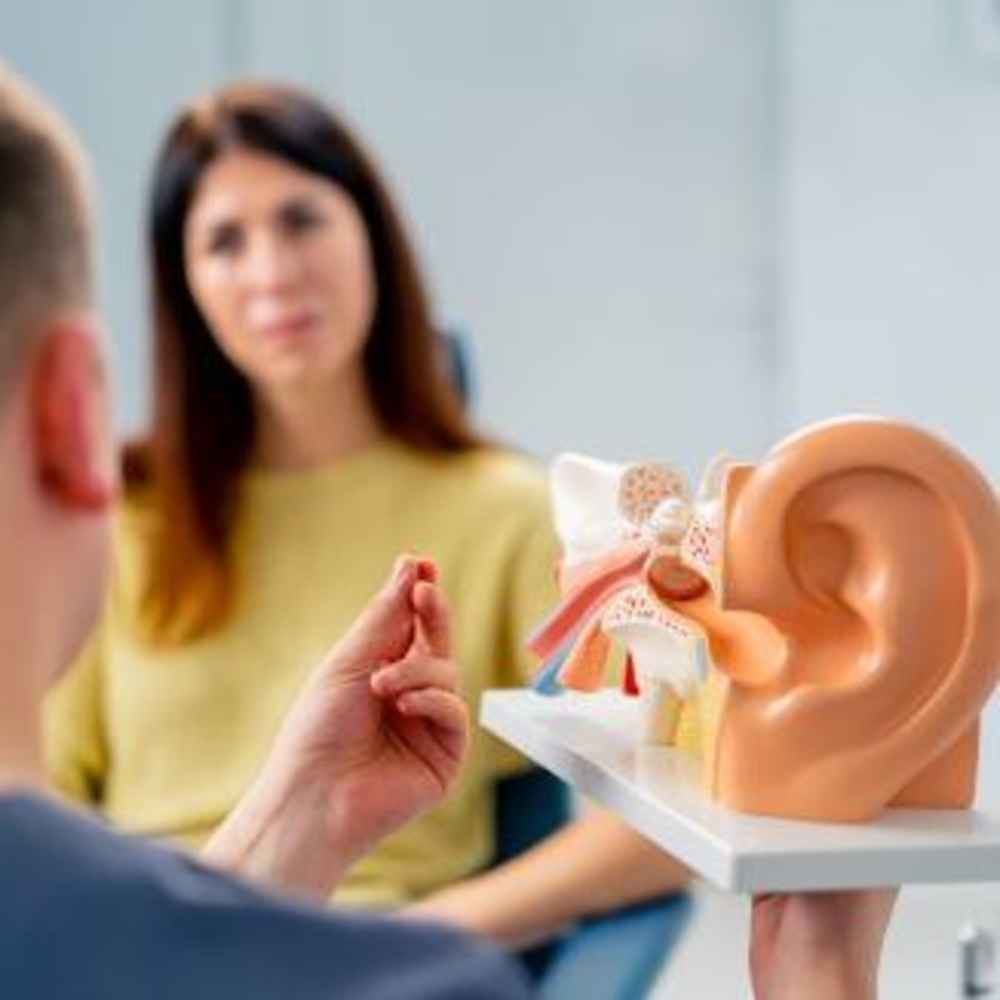Gaithersburg Office
Silver Spring Office

Our doctors specialize in non-surgical and surgical treatments for ear conditions.
At Montgomery Otolaryngology, our board-certified physicians provide expert treatment for a wide array of ear concerns. Our team is dedicated to diagnosing and managing ear disorders to improve your hearing and overall quality of life. Some of the common concerns we see with ears include:
Tympanoplasty is a surgical procedure to repair a perforated eardrum or address chronic ear infections. It involves grafting tissue to close the hole in the eardrum and restore its integrity.
Tympanoplasty is recommended for individuals with persistent eardrum perforations that do not heal on their own, chronic ear infections unresponsive to medical treatment, hearing loss due to a damaged eardrum, and recurrent ear drainage.
This procedure restores hearing by closing the perforation, reduces the risk of recurrent ear infections, and alleviates symptoms like ear pain and discharge, enhancing the overall quality of life.
Tympanoplasty is usually performed under local or general anesthesia. The surgeon makes an incision to access the eardrum, harvests tissue from another area (often the patient’s own body) to use as a graft, and places the graft over the perforation in the eardrum. The ear is then closed and dressed to protect the surgical site. Recovery typically takes a few weeks, during which hearing gradually improves.
If you suffer from chronic ear issues, schedule an appointment with Montgomery Otolaryngology to discuss your symptoms and available options. Contact us today to book your appointment.